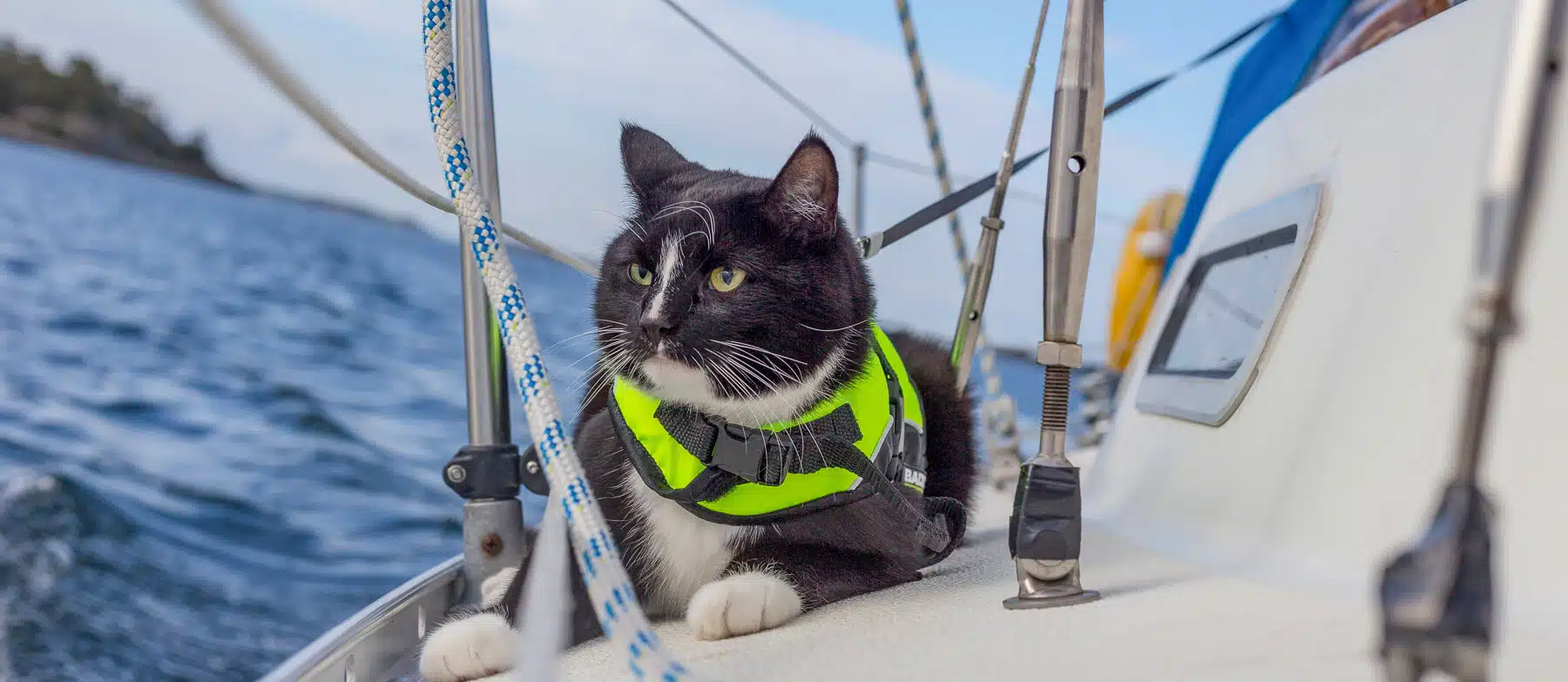The next vacation season is already in sight, the planning for the summer trip with your own or chartered boat is in full swing. But where to go with dog and cat? Depending on the destination, it may be a good idea to simply take the animals along. The European Consumer Centre Germany gives tips on what mistresses and masters should pay attention to when they are traveling in animal company by plane, train or bus.
The next season comes certainly – and finally somewhere in the world is known yes always summer. But where to take the animal companions, if the owners are planning a longer trip? Simply take them with you – that is an option for many animal lovers. However, there are a few things that should be taken into account so that there are no unpleasant surprises later on.
Because: certain minimum standards apply to dogs and cats in the EU member states, Norway and Northern Ireland when traveling within these countries or entering from a third country. For example, it is regulated that a maximum of only five animals per person may be carried in private travel.
Pets must travel with their owners
Incidentally, these regulations also apply when animals move permanently with their owners. And, pets must travel with their owners unless another person has been authorized in writing to do so. For pets such as hamsters or birds, the respective national regulations apply.
Attention: If the animals are transported for sales purposes, the EU regulations for commercial animal trade apply.
In the EU applies: a so-called pet passport must be carried
When traveling within the European Union and Norway and Northern Ireland must have a valid EU pet passport. Dogs and cats must be identifiable by microchip or tattoo and have valid rabies vaccination protection. Both must be noted in the EU pet passport.
If the vacation destination is outside the EU, the local regulations apply when entering the third country. In addition, further certificates are required on re-entry into the EU, depending on the vacation country. In case of doubt, appropriate information should be obtained from the embassy of the respective vacation country before the trip.
Caution: even within the EU there may be differences in the regulations, informing beforehand helps
For example, the regulations on prohibited dog breeds also differ within the European Union. Each Member State regulates here itself, which breeds are classified as dangerous and for this reason may not be taken. Another example: Finland, Ireland and Malta have stricter regulations regarding tapeworm treatment.
As a general rule, masters and mistresses are responsible for their animals. If, for example, the dog does not have the required rabies vaccination, it can either be returned home at the owner’s expense or vaccinated by a veterinarian and placed in official quarantine. In extreme cases, even the killing of the animal can be ordered.
With dog and cat on the plane: not all animals are accepted by all airlines
If you want to fly with your pet, you should find out before booking whether the respective airline accepts animals or restricts the transport to certain breeds. In addition, the rules differ in terms of cost and allowable number of animals.
In most cases, it is possible to take the animal with you as excess baggage in a transport box in the cargo hold. Small animals can be taken along in a so-called soft-shell container in the cabin. Important: Owners should have the airline confirm in writing in advance that it actually accepts the animal on the respective day and on the selected flight.
When transporting animals, there are often special registration and check-in deadlines
In addition, owners should find out when they have to appear with the animal for check-in. In this case, it is also worth studying the notices and conditions of carriage, as special registration deadlines often apply. If the conditions of carriage are violated, the airline may refuse to transport the animal.
Even when traveling by air, compliance with immigration regulations is the sole responsibility of the pet owner. If this is too stressful for you, you can hire a service provider (Animal Shipper) to take care of pick-up, check-in and everything else.
Some standards for animal transport have been regulated by the International Air Transport Association
Good to know: The airline umbrella organization IATA (“International Air Transport Association”) makes general specifications that apply to the transport of animals in aircraft. For example, there are minimum dimensions for the size and condition of the transport boxes.
Special regulations also apply to dogs and cats on buses and trains: these may vary depending on the transport company and EU country. There are no EU-wide regulations here. It is therefore recommended to inform yourself in good time before the trip.
Dogs and cats are also subject to special regulations on buses and trains
In the Spanish high-speed train AVE, for example, dogs and cats are allowed to travel up to 10 kg in weight. With the Deutsche Bahn AG and the Austrian Federal Railways you can take your dog or cat free of charge, but only in a transport box (maximum 70 x 30 x 50 cm).
Larger dogs, unless they are assistance dogs, need their own ticket. If they have their own ticket, then the same rail passenger rights apply in the event of train cancellation and delay as for the owners. In addition, dogs are required to be leashed and muzzled on many trains.
Important: already before the start of the journey check the area for pet suitability
Already before the journey with the own domestic animal is begun, the district should be examined for an appropriate suitability; dogs need for example much run out. 1a Yachtcharter from Lübbecke therefore recommends choosing a district with shorter strokes and consistent coastal proximity. In addition, calmer areas and times should be preferred to windier ones.
Dogs that are used to relieving themselves in litter boxes or similar devices at home can also endure longer strokes. However, this habit must already be in place. Breaks ashore, however, are generally important for any dog to exercise.
A larger yacht offers more space for the four-legged friend; the charter company should be informed about bringing a pet in any case
When choosing a yacht, space and a larger yacht can be advantageous for the dog (depending on the size), the charter professional recommends; this is especially true if there are several people on board. Much place can offer for example a catamaran.
With the noncommittal inquiry or reservation it is important to indicate from the outset that a dog comes with on board, because: not all Vercharterer or owners permit larger dogs or generally domestic animals on board.
Bringing a pet on board can also have an impact on the prices. These differ depending on the charter company in the amount of the price and type of calculation. Also a railing net can usually be booked as an extra.
Recommended for the “on-board dog”: life jacket with handle, a railing net can be booked in addition
A special dog life jacket in the right size is the most important equipment. It also has a handle on the back to lift the dog out of the water again if necessary. A leash can also be attached to it.
Below as well as on deck, a quiet and comfortable place should be created for the dog, where the animal can retreat at any time to meet its sleeping needs, and where it feels safe. A thick blanket or travel dog basket/bed will increase the comfort factor. Drinking water should always be available, especially on warm days.

If you want to be sure, test the four-legged friend’s seaworthiness beforehand on home waters
Whether the dog becomes a board dog or it does not get him at all, owners could already test in advance, for example, with a dinghy, rowing boat or inflatable boat in domestic waters, advises 1 a Yachtcharter. If there is the possibility of practicing before on a yacht in a port, this is likewise a good opportunity.
Also in the Bordapotheke suitable means should be available for the quadruped against diarrhea, vomiting, insect stings, disinfection and dressing material. Here as well as with the vaccinations a veterinary surgeon can help further.
Further information on animal transport by plane, train and bus is available from the European Consumer Centre Germany
Consumer Center Germany
c/o Center for European Consumer Protection e.V.
Bahnhofsplatz 3 | 77694 Kehl,
Tel. +49 (0) 78 51 991 4850
danzeisen@cec-zev.eu
www.cec-zev.eu
Info about pets on board with all major charter companies.













